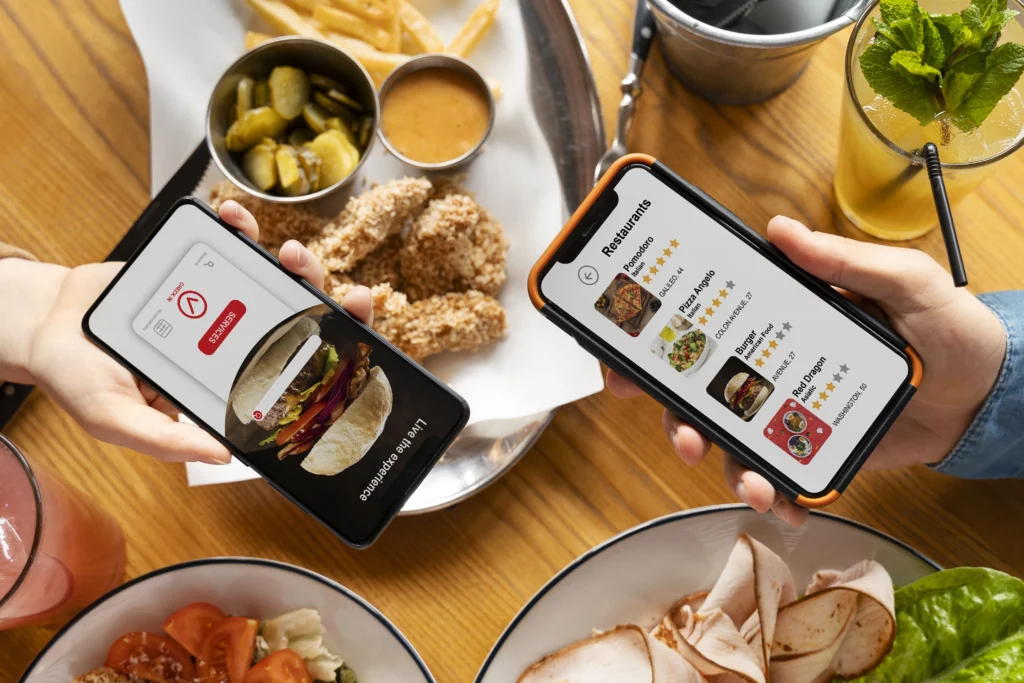
In the ever-evolving world of marketing, two dominant strategies clash: outbound vs inbound marketing. But unlike superheroes in a comic book, neither is inherently evil or good. Understanding when and how to utilize each is the key to unlocking a powerful marketing force. So, buckle up, marketing maestros, as we delve into the exciting realm of outbound vs. inbound marketing!
Table of Contents
Outbound vs Inbound Marketing
Outbound Marketing: The Bold Intruder
Imagine a charming salesperson knocking on your door, offering a product that piques your interest. That’s outbound marketing in a nutshell. It’s about actively reaching out to your target audience, interrupting their usual flow with messages about your brand. Think TV commercials, cold calls, email blasts, and targeted ads – all aiming to grab attention and generate leads.
Pros of Outbound Marketing:
- Fast results: Need an immediate boost in brand awareness or sales? Outbound can deliver quickly, especially with paid advertising.
- Targeted reach: Laser-focus your message on specific demographics or interests, maximizing impact.
- Brand visibility: Get your brand seen and heard in places your audience frequents, building recognition.
Cons of Outbound Marketing:
- Intrusive nature: Can be perceived as annoying or spammy, potentially damaging brand image.
- High cost: Implementing and maintaining outbound campaigns can be expensive, especially for large-scale efforts.
- Lower engagement: Interrupting people often leads to lower engagement compared to inbound’s pull strategy.
Zomato Outbound Marketing Example:

Zomato’s Hyperlocal Influencer Campaign: A Recent Outbound Marketing Gem from India
Zomato, the popular Indian food delivery platform, recently executed a clever outbound marketing campaign leveraging hyperlocal influencers to create targeted buzz and drive engagement. Here’s why it caught my attention:
Goal: Increase app downloads and orders in specific Indian cities with high growth potential.
Target Audience: Foodies within those specific cities, with a focus on younger demographics.
Outbound Tactics:
- Hyperlocal Influencer Partnerships: Zomato collaborated with food influencers based in the targeted cities. These influencers had built loyal followings who trusted their recommendations.
- Engaging Content Creation: The influencers created short, snackable video content showcasing their favorite restaurants and highlighting the convenience of ordering through Zomato. They used local slang and references to resonate with their audience.
- Social Media Promotion: The content was promoted across popular platforms like Instagram and YouTube, leveraging the influencers’ existing audience and reaching new potential customers through strategic hashtags.
- Contests and Giveaways: To further incentivize engagement, Zomato partnered with the influencers to run contests and giveaways, further driving app downloads and orders.
Results:
- The campaign generated significant buzz and positive sentiment in the targeted cities.
- App downloads saw a notable increase in the targeted areas.
- Zomato witnessed a rise in orders from restaurants featured by the influencers.
Key Takeaways:
- Hyperlocal Focus: By targeting specific cities and partnering with local influencers, Zomato ensured their message resonated deeply with the intended audience.
- Authenticity: Leveraging trusted local voices provided authenticity and credibility to the campaign, making it more impactful than generic messaging.
- Social Media Savvy: Utilizing popular platforms and influencer marketing effectively maximized reach and engagement within the target demographic.
- Incentivizing Action: The contests and giveaways added an element of fun and encouraged concrete actions like app downloads and orders.
This example highlights how an outbound marketing strategy can be highly effective when it’s localized, authentic, and leverages the power of social media and trusted influencers.
Remember, this is just one example, and the best approach will always depend on your specific brand, target audience, and goals. If you’d like to explore other recent outbound marketing campaigns from Indian brands, feel free to reach us out on littletechy!
Inbound Marketing: The Magnetic Charmer
Imagine hosting a fun, informative party that attracts people interested in your products. That’s the essence of inbound marketing. It’s about creating valuable content that attracts your target audience and nurtures them into loyal customers. Think blog posts, infographics, social media engagement, and SEO-optimized content – all working together to draw people in organically.
Pros of Inbound Marketing:
- Cost-effective: Can be achieved with organic strategies, making it ideal for startups and budget-conscious businesses.
- Higher engagement: By providing value, you build trust and foster deeper relationships with your audience.
- Sustainable growth: Inbound creates a flywheel effect, attracting more visitors over time, leading to long-term growth.
Cons of Inbound Marketing:
- Slower results: Building an engaged audience takes time and consistent effort. Patience is key!
- Competitive landscape: Standing out in the content sea can be challenging, requiring strategic planning and high-quality content.
- Requires expertise: Content creation, SEO optimization, and social media management can be complex, demanding specialized skills.
Pepperfry Inbound Marketing Example:
Pepperfry’s Content Marketing Masterclass: An Inbound Example from India

Pepperfry, India’s leading online furniture and home decor store, has successfully harnessed the power of inbound marketing to attract and engage its audience. Here’s how they’ve done it:
Goal: Grow brand awareness and website traffic, ultimately leading to increased sales and customer engagement.
Target Audience: Homeowners and design enthusiasts across India, with a focus on diverse tastes and budgets.
Inbound Tactics:
- High-Quality Blog Content: Pepperfry’s blog, “The Urban Nest,” publishes informative and engaging articles on various home decor and lifestyle topics. They curate content that caters to diverse interests, from DIY projects to expert interviews and trend guides.
- Visual Storytelling: Their blog posts are visually appealing, featuring high-quality product images, room inspiration photos, and DIY tutorials.
- SEO Optimization: The content is optimized for relevant keywords, ensuring organic search visibility and attracting interested readers.
- Social Media Engagement: Pepperfry actively engages with their audience on platforms like Instagram and Facebook, sharing blog snippets, user-generated content, and interactive polls.
- Email Marketing: They leverage email newsletters to nurture leads, share new content, and offer personalized product recommendations.
Results:
- Pepperfry’s blog has become a go-to resource for home decor inspiration in India, attracting millions of monthly visitors.
- Increased website traffic and engagement, leading to higher brand awareness and consideration.
- Social media following has grown significantly, fostering a strong community of engaged customers.
- Personalized email marketing has proven effective in driving sales and customer loyalty.
Key Takeaways:
- Value-Driven Content: Pepperfry focuses on creating informative and visually appealing content that genuinely helps their audience, building trust and establishing themselves as thought leaders.
- Multi-Channel Approach: By utilizing various platforms like blog, social media, and email, they reach their target audience where they are and maximize engagement.
- SEO Focus: Optimizing content for search engines ensures organic visibility and attracts new customers searching for relevant information.
- Consistency and Quality: Pepperfry consistently publishes high-quality content, building a loyal readership and establishing their brand as a reliable source of inspiration.
This example shows how inbound marketing can be a powerful tool for Indian brands, attracting and engaging customers through valuable content, social media interaction, and email marketing. Remember, building an audience with inbound takes time and consistent effort, but the long-term results can be highly rewarding.
If you’d like to explore more recent inbound marketing examples from Indian brands within a specific sector, feel free to reach us on littletechy!
The Synergy: Combining Outbound and Inbound Marketing

Remember, these aren’t isolated islands. The true magic happens when you combine the strengths of both approaches. Use outbound tactics to spark initial interest and awareness, then nurture that interest with valuable inbound content. Think of it as a warm handoff, guiding potential customers down the conversion funnel seamlessly.
Here are some winning combinations:
- Run retargeting ads to website visitors who engaged with your inbound content.
- Use webinars or events to capture leads generated through social media outreach.
- Promote gated content (e.g., e-books, whitepapers) through targeted email campaigns.
Remember:
- Align your strategy with your target audience: Understand their preferences and tailor your approach accordingly.
- Track and measure results: Continuously analyze data to refine your efforts and maximize ROI.
- Focus on providing value: Both outbound and inbound should offer genuine value to your audience, not just push a sales agenda.
Wrapping Note:
By understanding the distinctions and synergies between outbound and inbound marketing, you can craft a powerful, multi-pronged strategy that attracts customers like a magnet, propelling your business towards success!
Frequently Asked Questions (FAQs)
1. Is SEO inbound marketing?
SEO (Search Engine Optimization) is not exactly inbound marketing, but it’s a crucial tactic used within inbound marketing strategies. Inbound marketing aims to attract customers organically through valuable content, and SEO helps ensure that content ranks higher in search engine results pages (SERPs), making it more likely for potential customers to find it. So, SEO is a tool that supports inbound marketing goals.
2. Which is best outbound or inbound marketing?
There’s no single “best” approach, as both outbound and inbound marketing have their strengths and weaknesses. The optimal approach depends on your specific goals, target audience, budget, and resources.
Outbound marketing can be a good choice if you need fast results and want to directly reach a large audience. However, it can be expensive and intrusive, and may not generate as much engagement as inbound marketing.
Inbound marketing is more focused on building relationships with potential customers and attracting them to your brand through valuable content. It can be more cost-effective in the long run and fosters trust and loyalty, but it takes time and effort to see results.
3. What is harder outbound or inbound marketing?
The difficulty of each approach depends on your specific skills and resources. Outbound marketing can be easier to get started with, but it requires strong copywriting, design, and targeting skills to be effective. Inbound marketing requires content creation expertise, SEO knowledge, and ongoing effort to maintain momentum.
4. Is email marketing inbound or outbound?
Email marketing can be both inbound and outbound. Inbound email marketing involves sending emails to subscribers who have opted in to receive your content. This allows you to nurture relationships and provide value to an engaged audience. Outbound email marketing involves sending emails to people who haven’t given you their permission, which can be seen as spam and is generally not recommended.
5. Is inbound marketing only digital?
No, inbound marketing can be used in both digital and traditional channels. While online content and social media are prominent aspects, inbound marketing can also involve creating valuable offline content, such as brochures, events, or workshops, to attract and engage your target audience.
6. Is social media inbound or outbound?
Social media can be used for both inbound and outbound marketing. Inbound social media involves creating and sharing valuable content that attracts followers and encourages engagement. Outbound social media involves paid advertising or direct outreach to try to reach a wider audience.
